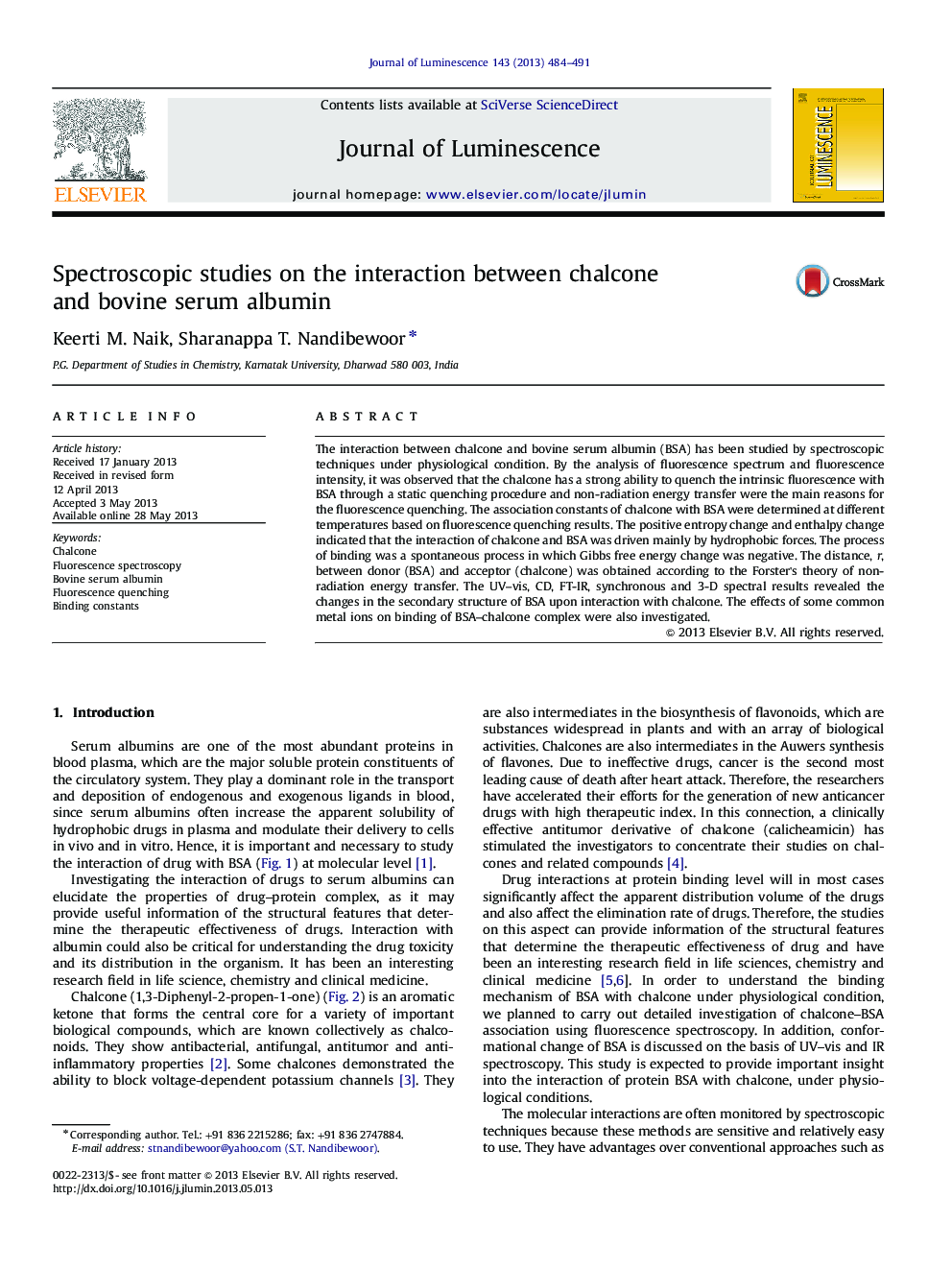| Article ID | Journal | Published Year | Pages | File Type |
|---|---|---|---|---|
| 5400492 | Journal of Luminescence | 2013 | 8 Pages |
Abstract
The interaction between chalcone and bovine serum albumin (BSA) has been studied by spectroscopic techniques under physiological condition. By the analysis of fluorescence spectrum and fluorescence intensity, it was observed that the chalcone has a strong ability to quench the intrinsic fluorescence with BSA through a static quenching procedure and non-radiation energy transfer were the main reasons for the fluorescence quenching. The association constants of chalcone with BSA were determined at different temperatures based on fluorescence quenching results. The positive entropy change and enthalpy change indicated that the interaction of chalcone and BSA was driven mainly by hydrophobic forces. The process of binding was a spontaneous process in which Gibbs free energy change was negative. The distance, r, between donor (BSA) and acceptor (chalcone) was obtained according to the Forster's theory of non-radiation energy transfer. The UV-vis, CD, FT-IR, synchronous and 3-D spectral results revealed the changes in the secondary structure of BSA upon interaction with chalcone. The effects of some common metal ions on binding of BSA-chalcone complex were also investigated.
Keywords
Related Topics
Physical Sciences and Engineering
Chemistry
Physical and Theoretical Chemistry
Authors
Keerti M. Naik, Sharanappa T. Nandibewoor,
